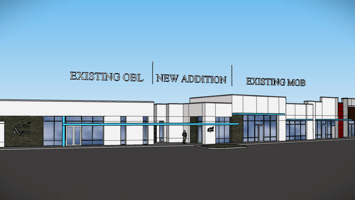Retail healthcare refers to medical services integrated into non-traditional settings, often within...
9 Important Reasons to Incorporate Natural Light in Ambulatory Healthcare Design
Introducing natural light into the ambulatory healthcare setting can have profound effects on both patients and staff who use the facility. The following are 9 ways in which natural light can improve the ambulatory healthcare setting:
-
Improving Mood and Psychological Wellbeing: Natural light is associated with improved mood and psychological well-being. Patients and staff exposed to natural light tend to feel more relaxed, less anxious, and more positive. This can contribute to a more pleasant and healing environment for patients, as well as a more comfortable and productive workspace for healthcare providers.
-
Regulating Circadian Rhythms: Exposure to natural light helps regulate the body's internal clock or circadian rhythm. This can be particularly important in healthcare settings, as disruptions to circadian rhythms can affect sleep patterns and overall health. Proper regulation of circadian rhythms can improve patients' sleep quality, mood, and overall recovery.
-
Pain Management and Healing: Research suggests that exposure to natural light can have positive effects on pain management and healing. Natural light exposure is associated with the release of endorphins, which are natural painkillers, and can enhance the body's healing processes. Patients may experience reduced pain levels and faster recovery times.
-
Enhanced Staff Performance: Healthcare staff working in environments with natural light tend to experience increased alertness and better cognitive function. This can lead to improved staff performance, better communication, and reduced medical errors, ultimately providing a higher quality of care to their patients.
-
Decreased Stress and Anxiety: Natural light has been shown to reduce stress and anxiety levels. In a healthcare setting, where patients and their families may already be experiencing stress due to illness, the introduction of natural light can help create a more calming and soothing environment.
-
Positive Impact on Recovery: Exposure to natural light has been linked to improved recovery rates among patients. The combination of improved mood, reduced stress, better sleep, and enhanced healing processes can contribute to a quicker recovery for patients and a higher overall satisfaction with their healthcare experience.
-
Energy Efficiency and Sustainability: Incorporating natural light into healthcare settings can also have practical benefits. It can reduce the need for artificial lighting during the day, leading to energy savings and a smaller carbon footprint. Additionally, well-designed daylighting strategies can improve heating and cooling within buildings and help reduce the energy consumption of HVAC systems.
-
Aesthetic Design Benefits: Natural light can enhance the overall aesthetic appeal of a healthcare facility. Patients and staff may find the environment warmer, more inviting, and comfortable. Natural light may also enhance one's perception of a space by making it feel larger and more open, creating a sense of spaciousness that can alleviate feelings of confinement.
-
Connection to Nature: The presence of natural light allows patients and staff to maintain a connection to the outdoor environment. This connection to nature can provide a sense of normalcy and a calming influence in what might otherwise be a clinical and sterile environment.
The introduction of natural light in the ambulatory healthcare setting provides a multitude of benefits. From improving patient outcomes and enhancing the well-being of healthcare professionals to creating a welcoming and aesthetically pleasing environment, natural light plays a crucial role in transforming the healthcare experience. By employing the power of sunlight in the design, healthcare facilities can create places that promote healing, productivity, comfort, and overall wellbeing.



